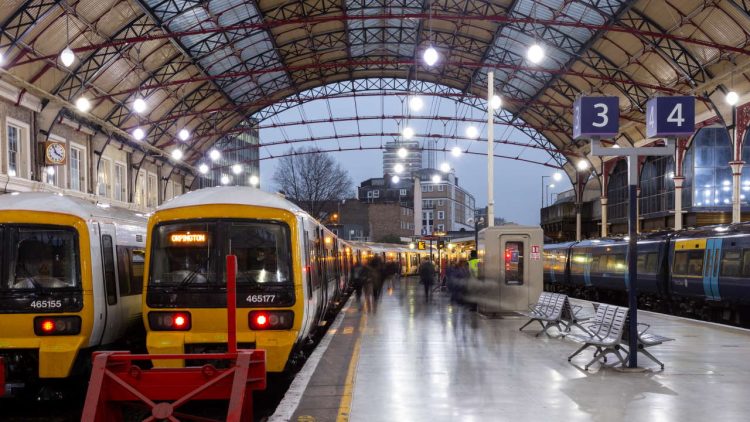A partnership between Cellnex UK and Three UK will bring enhanced connectivity for the Brighton Mainline Route and will see Three host mobile voice and data equipment on Cellnex UK’s newly installed infrastructure for the entire route from London to Brighton.
The innovative scheme sees Three UK as one of the UK’s first four mobile network operators to take part in the service which is part of Cellnex UK’s 25-year contract with Network Rail to provide delivery for the project which will benefit passenger connectivity and also for communities along the route.
Significant improvement to mobile and data connectivity will be noticed by Three customers later in the year including uninterrupted connectivity along the line, onboard trains and at major stations including:
Cellnex UK’s infrastructure is a neutral host which is able to handle equipment from all four of the mobile network operators with brings the possibility of all mobile and smart device users to benefit from improved connectivity whilst travelling.
From London to the South Coast, the Brighton Mainline is 51 miles in length and travels through some of the country’s most populated areas. The busy route can carry as many as 50,000 passengers each day and its current mobile internet connectivity offers a mix of strong signal to no connectivity at all which is due to the landscape and a number of tunnels and cuttings.

David Crawford, Managing Director of Cellnex UK said: “The lack of reliable connectivity along complete rail journeys is a frustration shared by many passengers and is something that Network Rail is keen to address. As a neutral host and via shared investments, Cellnex provides value to both mobile operators and Network Rail. Therefore, this agreement with Three UK is a hugely positive step in improving Three UK customer experience along the Brighton Mainline route”
The Brighton Mainline project supports the UK Government’s Digital Strategy, is an important element of Network Rail’s ‘putting passengers first’ vision and will also drive environmental efficiency as people are encouraged to swap cars for trains”
David Hennessy, Three UK and ROI’s Chief Technical Officer said: “At Three UK our mission is to provide better connectivity, every day, for every customer. Enhancing our customer experience is at the heart of this strategy and we know vital it is for people to stay seamlessly connected wherever they may be.
With our 4G network now covering 99% of the UK outdoor population, carrying 28% of mobile data traffic, together with our partner, Cellnex UK, we are proud to lead the way in extending this to rail routes typically blighted by patchy coverage.”
Lucy McAuliffe, Network Rail’s interim Sussex route director, said: “It’s great to see plans for the rollout of 5G connectivity across the route between London and the south coast.
This will make a real difference to passenger journeys and people living alongside the railway as it will allow them to stay better connected.
Passengers will be able to shop, work and talk whilst travelling and even have seamless connection when travelling through tunnels.”
Keith Jipps, Infrastructure Director at Govia Thameslink Railway said: “Network coverage along our most important rail route between London and the south coast is patchy and frustrating for our passengers. Getting an uninterrupted connection, even through the tunnels, will be brilliant – and the fact that the infrastructure will be 5G-ready is even better! We’re responding to customer feedback and have been supporting this project from the outset – it’s an added bonus that our communities along the route will benefit too. This is a great piece of work.”
Cellnex UK’s infrastructure upgrades will include:
- Towers that allow the broadcast of mobile signals along the rail corridor
- Base station hotels (equipment rooms) close to the railway which house capacity-increasing telecom equipment
- High-capacity fibre from Victoria and London Bridge via East Croydon to Brighton
- Bespoke radio equipment to bring uninterrupted coverage for the main London stations as well as in tunnels and cuttings on the route
Three UK’s equipment will be hosted using newly installed open route ‘Macro Sites’, station Distributed Antenna Systems and special coverage Distributed Antenna Systems which will bring uninterrupted coverage for their customers in areas identified as ‘not-spots’ including tunnels, cuttings and congested locations such as busy stations and peak-time trains.





Responses